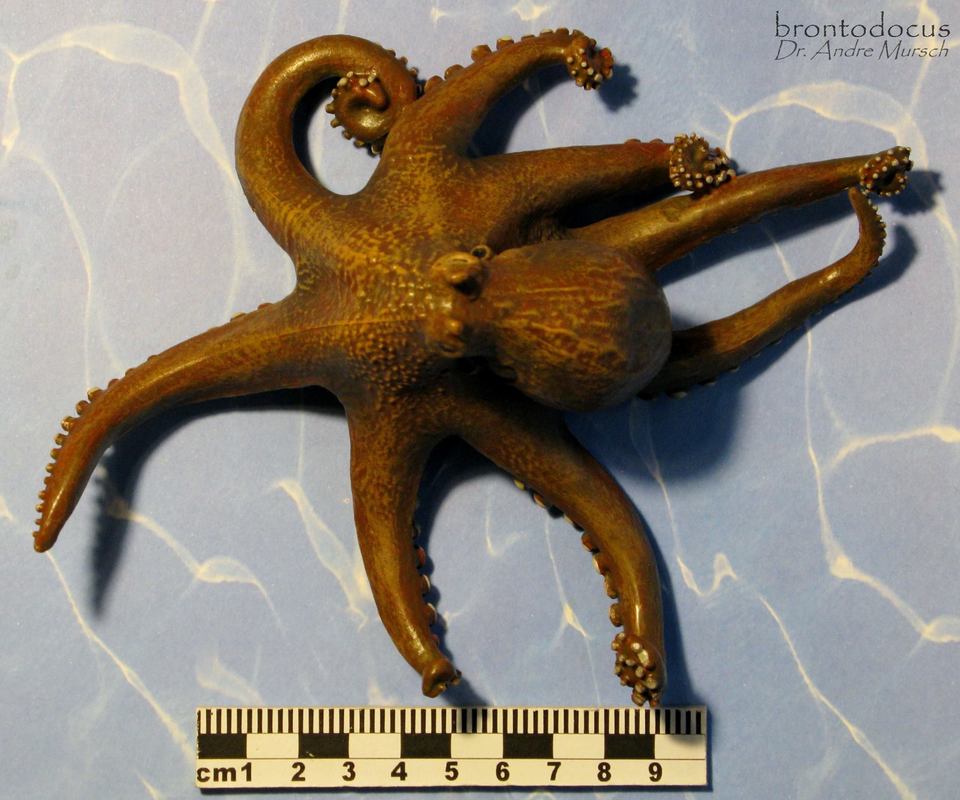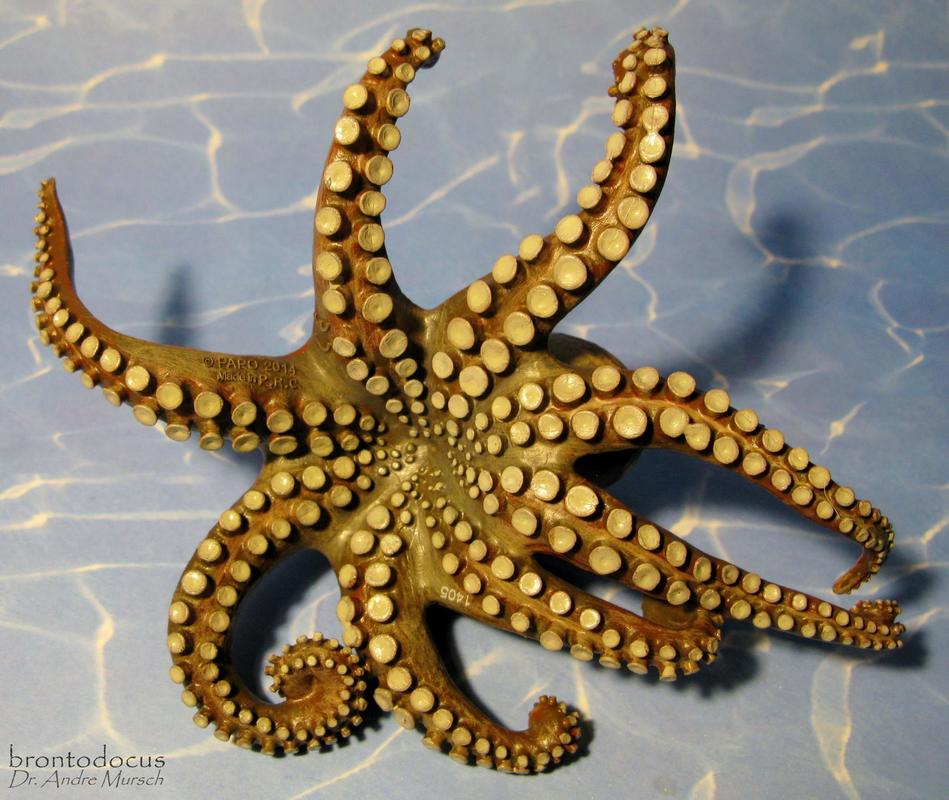Time for the next walkaround by brontodocus, this time the 2014 octopus by Papo. I picked this figure for two reasons. First, to have our first mollusk on the Animal Toy Blog. And second, because there is an obvious anatomical error with it (you will see below, brontodocus explains it well). Visitors of this blog may look to these posts to decide whether or not to buy a particular figure. It is helpful for us to also showcase those figures that are not accurate as well as the really accurate ones!

This was – at least for me – a long awaited Papo release. So here’s a walk-around of the Papo Marine Life (or “L’Univers Marin”) 56013 Octopus, new for 2014. While not identifiable to species level without absolute certainty this figure is probably meant to represent the common octopus, Octopus vulgaris Cuvier, 1797.


It’s quite a large figure with an arm length (if they were stretched out) of approx. 130 mm or a diameter of perhaps 220 mm (and the arms look short or contracted in relation to the mantle). The mantle is approx. 60 mm long and the pallium (the gut bearing sac-like part of the body behind the eyes) approx. 40 mm. As a result, if one regards this figure as representing O. vulgaris the scale would be between approx. 1:4 and 1:6.



The sculpt is very well made and highly detailed with lots of warts in front of the eyes and subtle, longish folds on the pallium. The suckers are among the best I’ve seen on a cephalopod figure. The beak is not sculpted. It’s all in all a wonderful… but, no, wait, this can’t be true… there’s a siphon (or “hyponome”) on either side of the body! So apparently the sculptor didn’t know that this is in fact a single organ (which can be stretched out to one side – but only to one side at a time!!! The same mistake happened to the sculptor of the Safari Ltd Incredible Creatures giant Pacific octopus, by the way.


It seems the Papo octopus’ master model was possibly not sculpted by hand but by computer instead – note the parallel, horizontal lines on the figure which look like unintentional 3d printer artifacts. All of you who have ordered any 3d printed models from e.g. Shapeways have seen lines like these on those products, too (if they were not polished off). While I don’t have a problem with a sculpt that is designed an a computer I think the master for making molds (which are highly expensive in production) should be more or less flawless and devoid of printing lines.



The common octopus has so far not been evaluated by IUCN (“NE”) and is a commercially important species in fishing industry. It is surprising how this (and other) species can not only quickly change body colouration but also get a wrinkly or even spiny appearance by contraction of subcutanous muscles so that photos of the same individual can look like entirely different species. Even the hornlets over the eyes of this figure are not unusual and a common octopus can show them at times.



Disclaimer: links to Ebay and Amazon on the AnimalToyBlog are affiliate links, so we make a small commission if you use them. Thanks for supporting us!



